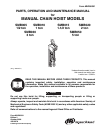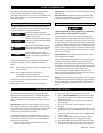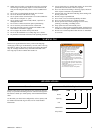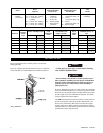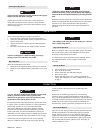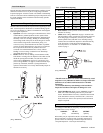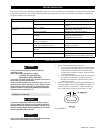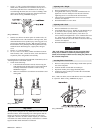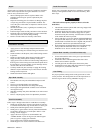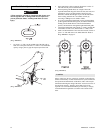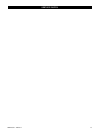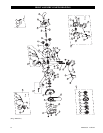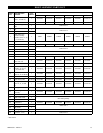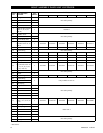
2 MHD56391 - Edition 2
1
SAFETY INFORMATION
This manual provides important information for all personnel
involved with the safe installation, operation and proper
maintenance of this product. Even if you feel you are familiar with
this or similar equipment, you should read this manual before
operating the product.
Danger, Warning, Caution and Notice
Throughout this manual there are steps and procedures which, if
not followed, may result in a hazard. The following signal words
Indicates an imminently hazardous
situation which, if not avoided, will result
in death or serious injury.
Indicates a potentially hazardous situation
which if not avoided, could result in death
or serious injury.
Indicates potentially hazardous situation
which if not avoided, may result in minor
or moderate injury or property damage.
Indicates information or a company
policy that relates directly or indirectly to
the safety of personnel or protection of
property.
DANGER
WARNING
CAUTION
NOTICE
are used to identify the level of potential hazard.
The words shall and should are used throughout this manual in
accordance withdefinitions in the ASME B30 standards as
follows:
Shall - this word indicates that the requirement is mandatory and
must be followed.
Should- this word indicates that the requirement is a
recommendation. The advisability of the
recommendation depends on the facts in each situation.
Also used in this manual and other manuals are the following
words with definitions:
Owners/users - these words also refer to winch operators.
Signal-person - person who observes load and relays directions to
winch operator.
Operation Manuals - documentation that is provided with the
winch that contains installation, parts information, maintenance,
lubrication and related service instructions.
Safety Summary
WARNING
• Do not use this hoist for lifting, supporting, or transporting
people or lifting or supporting loads over people.
The National Safety Council, Accident Prevention Manual for
Industrial Operations, Eighth Edition and other recognized safety
sources make a common point: Employees who work near cranes
or assist in hooking on or arranging a load should be instructed to
keep out from under the load. From a safety standpoint, one factor
is paramount: conduct all lifting operations in such a manner that
if there were an equipment failure, no personnel would be injured.
This means keep out from under a raised load and keep out of the
line of force of any load.
Ingersoll Rand hoists are manufactured in accordance with the
latest ASME B30.16 standards.
The Occupational Safety and Health Act of 1970, generally places
the burden of compliance with the user, not the manufacturer.
Many OSHA requirements are not concerned or connected with
the manufactured product but are, rather, connected with the final
installation. It is the owner's and user's responsibility to determine
the suitability of a product for any particular use. It is
recommended that all applicable industry, trade association,
federal, state and local regulations be checked. Read all operating
instructions and warnings before operation.
Rigging: It is the responsibility of the operator to exercise caution,
use common sense and be familiar with proper rigging techniques.
Refer to ASME B30.9 for rigging information, American Society
of Mechanical Engineers, Three Park Avenue, New York, NY
10016.
SAFE OPERATING INSTRUCTIONS
The following warnings and operating instructions have been
adapted in part from American Society of Mechanical Engineers
ASME B30.16 (Overhead Hoists) and are intended to avoid
unsafe operating practices which might lead to injury or property
damage.
Ingersoll Rand recognizes that most companies who use hoists
have a safety program in force in their facilities. In the event that
some conflict exists between a rule set forth in this publication and
a similar rule already set by an individual company, the more
stringent of the two should take precedence.
Safe Operating Instructions are provided to make an operator
aware of unsafe practices to avoid and are not necessarily limited
to the following list. Refer to specific sections in the manual for
additional safety information.
1. Only allow people, trained in safety and operation of this
product, to operate the hoist.
2. Only operate a hoist if you are physically fit to do so.
3. When a “DO NOT OPERATE” sign is placed on the hoist,
do not operate the hoist until the sign has been removed by
designated personnel.
4. Before each shift, the operator should inspect the hoist for
wear or damage.
5. Never use a hoist which inspection indicates is worn or
damaged.
6. Periodically, inspect the hoist thoroughly and replace worn or
damaged parts. Refer to the “INSPECTION” section on page
5.
7. Lubricate the hoist regularly. Refer to the “LUBRICATION”
section on page 7.
8. Do not use hoist if hook latch has been sprung or broken.
9. Check that the hook latches are engaged before using.
10. Never splice a hoist chain by inserting a bolt between links.
11. Only lift loads less than or equal to the rated capacity of the
hoist. Refer to the “SPECIFICATIONS” section on page 3.



